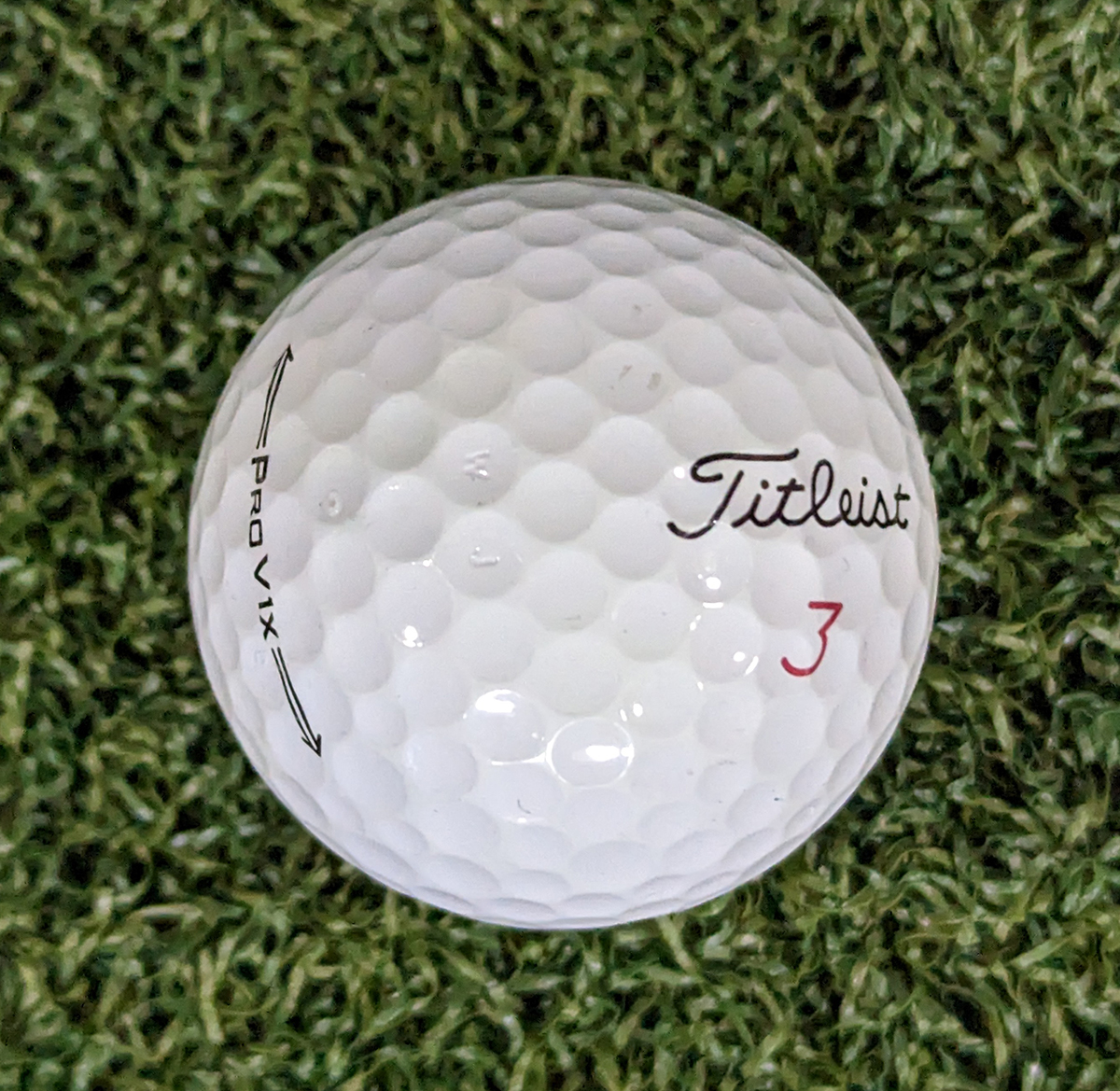For many years, I played a old standby golf ball that I picked up at Dick’s Sporting Goods. It was a Top-Flite and I could purchase 15 golf balls for about $20 and even less when they were on sale. But my friends would tell you it felt like hitting a rock. In fact, if a specific buddy hit a ball out of bounds and I offered up one of my brand new Top-Flite balls, he would refuse. Only at one point when he offered me a Callaway Supersoft, did I really appreciate the difference. Understanding the key distinctions between these two types of balls can significantly impact a player’s overall performance in the game. This article will explore the notable characteristics of soft and hard golf balls, their unique benefits, and how to select the right option for individual players.
At first glance, all golf balls may appear similar in appearance, but the essential difference lies in their composition and performance on the course. Soft golf balls, as the name suggests, exhibit a softer feel and touch with a lower compression rating, usually between 35 to 65. These balls are most suitable for players with slower swing speeds, as they require less club speed to achieve proper compression, resulting in straighter shots and a better feel overall. On a personal level, I find I am able to better stop low compression golf balls on the green. I believe some of that may be combined with certain golf ball spin characteristics.
On the other hand, hard golf balls have a higher compression rating, generally falling between 65 and 120. These balls demand faster swing speeds to generate optimal compression and are typically favored by more advanced players. In the following sections, we’ll delve deeper into the nuances of soft and hard golf balls, enabling golfers to make an informed decision that best suits their playing style and preferences.
I will grab a handful of golf balls which are sitting in my bag right now to show their compression ratings.
Understanding Soft and Hard Golf Balls
To understand the key differences between soft and hard golf balls, it is essential to cover their construction and compression. These two factors greatly affect the feel and performance of the golf balls, making them suitable for different types of golfers.
Construction
Soft and hard golf balls may have similar appearances, but their construction varies. Soft golf balls typically feature a lower compression core encased in a softer cover. This design allows for enhanced feel and control, often preferred by golfers with slower swing speeds. In contrast, hard golf balls have a higher compression core surrounded by a firmer cover. These balls provide less spin and are generally more suitable for golfers with faster swing speeds.
Compression
Compression is a significant factor in determining the hardness or softness of a golf ball. It is measured by how much a ball deforms under a specific impact force. Soft golf balls tend to have lower compression ratings, meaning they can be compressed more easily. This characteristic makes them better suited for players with slower swing speeds, as they require less force to achieve proper compression and generate straighter shots.
On the other hand, hard golf balls have higher compression ratings, requiring more force to compress them. Golfers with faster swing speeds often benefit from these balls, as they can generate the required force to achieve optimal compression and distance. It is important for golfers to choose a ball with a compression rating that matches their swing speed for optimal results.
TaylorMade Tour Response 70 Compression Rating
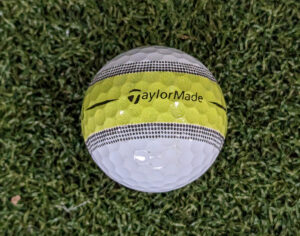
Performance Differences
Distance
One key difference between soft and hard golf balls is the distance they can cover. While both types have similar launch angles, hard golf balls tend to perform better in terms of distance due to their firmer core and higher compression rating, which can range from 65 to 120.
Top Flite D2+ Feel Soft Compression
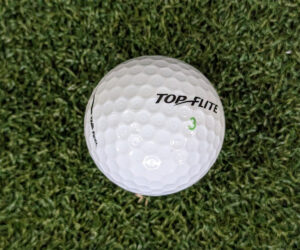
Harder golf balls require faster swing speeds to create proper compression, making them suitable for players with higher swing speeds. On the other hand, softer golf balls have lower compression ratings, making them ideal for players with slower swing speeds, as they can still achieve good distance without needing as much force.
Spin and Control
Another important aspect to consider when deciding between soft and hard golf balls is the amount of spin and control they offer. Firm golf balls generally have more side spin, allowing for better control on shots with longer clubs. However, this attribute might not always be an advantage, as increased spin can lead to unintentional hooks and slices for some players.
Softer golf balls typically have less spin on longer shots, but can provide more control on shorter shots around the green, making them an appealing option for players who prioritize feel and control in their short game.
Pinnacle Rush Low Compression Rating?
I am told the Pinnacle Rush is a low compression rating golf ball but similar to the Top-Flite D2+ shown above, I do not see an actual compression rating.
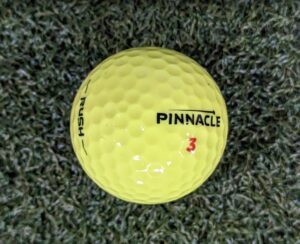
Feel on Impact
The feel of the ball on impact is one of the most noticeable differences between soft and hard golf balls. Softer golf balls provide a more pleasant, softer feel when hit, which can enhance a player’s overall experience during a round of golf. On the other hand, harder golf balls can sometimes feel like hitting a rock.
While the choice between soft and hard golf balls ultimately comes down to personal preference, understanding the performance differences can help golfers make a more informed decision when selecting the right golf ball to improve their game and overall enjoyment on the course.
Ideal Player Profile
Understanding the ideal player profile for soft and hard golf balls can help golfers make an informed decision on the best golf ball to choose for their game.
Soft Golf Balls
Softer golf balls are typically preferred by players with slower swing speeds as these balls have lower compression ratings, making it easier for the golfer to compress the ball effectively. Golfers with driver swing speeds below 100 mph tend to benefit the most from using a soft golf ball. The characteristics of the soft golf balls include:
- Enhanced feel and touch during play
- Greater control and accuracy, especially for short game shots
- Potential for straighter shots and better overall feel
Soft golf balls are suited for players seeking enhanced feel, control, and shot shaping ability, as well as those with slower swing speeds who want to maximize their distance and accuracy.
Callaway Supersoft 38 Compression Rating
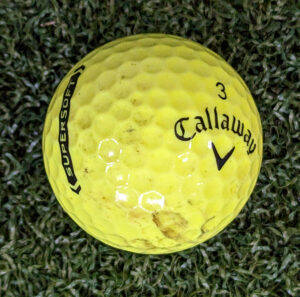
Hard Golf Balls
Hard golf balls, on the other hand, are designed for golfers with faster swing speeds and require a higher compression to perform at their optimum level. Players with swing speeds above 100 mph are more likely to see benefits from using hard golf balls. The features of hard golf balls include:
- Enhanced distance capabilities, especially for high swing speed players
- Lower spin rates, resulting in straighter, more piercing ball flight
- Potentially more durable and resistant to scuffs and cuts
Hard golf balls cater to players who prioritize distance and durability over feel and control. Golfers with faster swing speeds and those who struggle with excessive spin and ballooning ball flight may find better results with hard golf balls.
Nitro Ultimate Distance 90 Compression Rating and umm errr Illegal
Actually, as of yet Nitro golf balls do not make it to the USGA Conforming List of Conforming Golf Balls
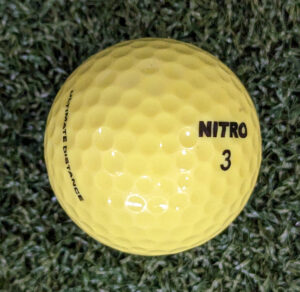
How to Choose the Right Ball
When selecting between soft and hard golf balls, there are several factors to consider. Golfers should take into account their swing speed, skill level, and personal preferences to find the ball that best suits their needs.
Swing Speed
Swing speed plays a major role in determining the ideal golf ball. Golfers with higher swing speeds, generally above 100 MPH, often benefit from using harder golf balls because of the benefits mentioned above. For those with slower swing speeds, soft golf balls with a lower compression rating, typically ranging from 35 to 65, may offer a more pleasant feel.
Skill Level
Another factor to consider is the golfer’s skill level. Beginners may benefit from using soft golf balls, which typically provide higher launch angles and spin rates with longer clubs, while experienced players may prefer the durability and control offered by harder golf balls.
Personal Preferences
Ultimately, personal preferences play a significant role in choosing between soft and hard golf balls. Golfers should experiment with different ball types to determine which ball best suits their playing style and the courses they frequently play on. Factors such as feel, performance, and durability should be weighed to make an informed decision.
I found I could hit further drives with higher compression golf balls but if I wanted the ball to land and stay on the green, a softer ball better suited my swing. A higher compression ball may end up rolling out further for me but it doesn’t matter if you’ve rolled into the rough. Ultimately I’ve switched to a lower compression golf ball.
Popular Soft and Hard Golf Ball Models
If you are at the local sporting goods store or Walmart, here is a look at a few soft and hard golf balls if you are itching to try a different brand.
Soft Golf Balls: Soft golf balls are designed for players with lower swing speeds who are seeking more control and a softer feel. Some popular soft golf ball models include:
- Titleist AVX: A premium, high-performance golf ball with a soft feel that provides low spin for exceptional distance off the tee.
- Callaway Chrome Soft: This ball offers excellent control around the greens while still providing long-distance performance for players with moderate swing speeds.
- Srixon Soft Feel: Designed for golfers with lower swing speeds, the Soft Feel provides both distance and greenside control.
Srixon Soft Feel 60 Compression Rating

Hard Golf Balls: Hard golf balls are typically suited for players with higher swing speeds who prefer a firmer feel and more distance. Some popular hard golf ball models are:
- Titleist Pro V1: With a compression rating of 87, the Pro V1 is an industry standard for high-performance golf balls, offering unmatched distance, spin, and control for golfers who prioritize performance.
- Bridgestone Tour B X: A firmer ball designed for golfers with swing speeds above 105 MPH, the Tour B X delivers exceptional accuracy and distance.
- TaylorMade TP5x: This model boasts a high compression, providing low spin and maximum distance for players with high swing speeds.
Titleist Pro V1X 97 Compression Rating
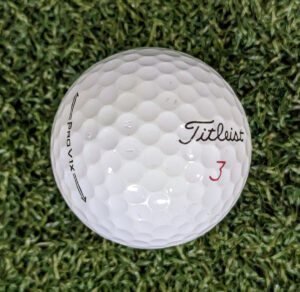
My take on this is to try out several golf balls. If you are lucky enough to have a device which measures distance and ball spin, this along with feel may help to decide which golf ball is right for you. The golf ball above was my inspiration to create a DIY Golf Pumpkin.
Final Thoughts on Soft and Hard Golf Balls
In choosing between soft and hard golf balls, one must consider their swing speed and skill level. Soft golf balls tend to not go as far but can offer good spin for stopping ability. You also get what you pay for. Meaning a dozen balls for $15 will tend to not have the characteristics as the same compression ball that costs $40 per dozen. For my own use I am currently gaming both TaylorMade Tour Response (thanks to my wife for the Christmas present) and Callaway Supersoft. Note they have completely different compression ratings.
I do have an end goal in mind this year. That is to get out to my golf cave and with half a dozen balls or more and hit a high lofted club, medium lofted, and driver. In the end I want to see distance and spin. I did a quick ball spin test while using my SkyTrak. I think there is always some compromise but if you can find a combination of a golf ball which goes far and spins well, that would most likely be your choice on the golf course, no matter the compression.

